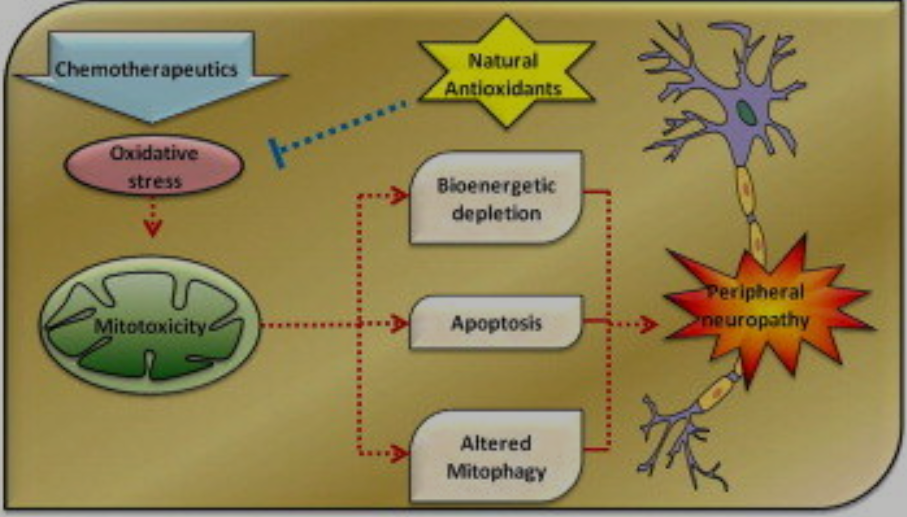Reducing Symptoms of Chemotherapy-Induced Neuropathy

Chemotherapy is a long and painful treatment process for individuals suffering from cancer. One of the most common side effects associated with chemotherapy is peripheral neuropathy, a tingling / numbness to the feet. The overall incidence of chemotherapy induced peripheral neuropathy (CIPN) ranges from 30%–80% in patients treated for cancer, depending on the chemotherapy regimens used and the duration of treatment
With the focus primarily on direct cancer therapy, the priority of CIPN and associated symptoms is typically low until the cancer is in remission.
As patients begin to resume their normal routines the effects of the chemotherapy-induced neuropathy can start to interfere with daily activities. Below are a few simply tips that can help reduce the symptoms of CIPN.
What is CIPN?
Neuropathy is a type of nerve damage that can cause one of many unusual sensations, such as tingling, numbness, and other feelings. These feelings are most often noticed in the hands and feet of the patients.
The main belief why neuropathy happens is because chemotherapy is meant to destroy cancer cells, but it also cannot help but damage healthy cells, too due to chemotherapy toxicity. When chemotherapy affects the movement and feeling in the hands and feet, they consider it chemotherapy-induced peripheral neuropathy, or CIPN, for short.
How to Prevent & Treat CIPN
The best way to outright prevent CIPN is to simply choose a chemotherapy drug that is not as likely to cause it. This, however, is not always a guarantee, as treatments for cancer are known to be "diagnosis-specific". Some of the most common chemotherapies that cause neuropathy include vinca alkaloids (vincristine), cisplatin, paclitaxel, and the podophyllotoxins (etoposide and tenoposide). Other drugs used to treat cancer such as thalidomide and interferon also can cause peripheral neuropathy. This means the most helpful drugs can also have the most severe side effects.
Although there is no guarantee for reversal of CIPN symptoms there is some promising research with nerve protective medications and vitamin supplementations which demonstrates reversal of the symptoms. Below are just a few of the top worth exploring.
HDAC6 inhibitors
The novel therapeutic option of the inhibition of HDAC6 has been proposed to protect against neurological disorders by facilitating distribution of mitochondria throughout the neuronal network. In a recent study it was demonstrated that just 11 doses of inhibition of HDAC6 treatment improved mitochondrial bioenergetics and contents in the tibial nerves of cisplatin-treated mice. Or in other words reduced CIPN symptoms!
There is sure to more soon on the advanced of FDA approved medications for the reversal CIPN.
Nerve-Protective Supplements
Studies have proven that taking vitamins and other supplements can help alleviate symptoms of CIPN and even stimulate new nerve growth. Some of the big players in this area are L-methyl-folate, acteyl-l-carnitine and R-lipoic acid.
One study on acetyl-l-carnitine demonstrated a reduction in painful symptoms after just 10 days of treatment with the efficacy persisting for 3 weeks after the supplements were stopped. Suggested dose is 100 mg/kg by mouth or also intravenously.
For dosing and suggested vitamin supplementation it is suggested to speak to your medical professional.
CBD Oil and Creams
Cannabis has been used in medicine for thousands of years prior to achieving its current illicit substance status. Cannabinoids, the active components of Cannabis sativa, mimic the effects of the endogenous cannabinoids, activating specific cannabinoid receptors, particularly CB1 found predominantly in the central nervous system.
Topical CBD Creams have been shown to be of benefit in the treatment of peripheral neuropathy, suggesting an important role in the prevention and management of CIPN. One such brand is Theramu not only contains the beneficial CBDs but also the strong anti-oxidant emu oil
Textured Sensory Insoles
There are wearables that are designed to bring stability to movement patterns when neuropathy causes numbness in the feet. These products include insoles, compression socks and gloves.
Naboso Insoles, are designed to stimulate the nerves on the bottom of the feet. These insoles do a wonderful job of alleviating foot pain and fatigue in addition to restoring necessary foot function to help you stay active despite having CIPN.
Light Therapy
A new treatment for CIPN has made the rounds in recent years known as low-level laser therapy. With this therapy, infrared light is used in the affected areas of your body to enhance the repair of tissue and improve the health and function of the nerves within.
Systems such as the Mito Red Light now makes this treatment options something that can be done at the convenience of your own home.
Additional Treatment Options
There are many forms of alternative medicine that patients find to be beneficial in CIPN. These include acupuncture, chiropractic, reflexology, among others. We encourage you to try these remedies to cope with stress, which is a very common symptom when being diagnosed with cancer and being treated with chemotherapy. However, it is not backed by research that these alternative medicines can treat additional symptoms of CIPN.
Conclusion
CIPN is on the rise but not a condition that is without potential hope in the reversal or reduction of the symptoms. We suggest viewing the above options as lifestyle changes that requite consistency and patience. The future of research for CIPN is bright and hopefully soon the risks of nerve toxicity can be prevented during the initial chemotherapy treatments.